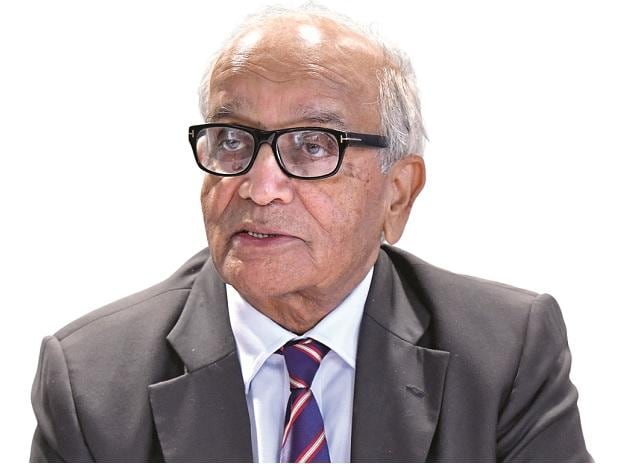Maruti Suzuki India Chairman R C Bhargava on Monday at a media interaction said that even with the number of cars per 1,000 population projected to grow by three to five per year, India would still take 40 years to draw level with China.
In the past five years, car penetration on average grew by a mere one per 1,000 population, especially with the closure of plants and disruption of sales during the pandemic.
The key drivers for the car industry’s sluggish growth — and consequently penetration — are twofold: high taxation and higher cost of regulatory compliance, especially for small cars.
Bhargava pointed out that currently, the penetration ratio in India is 30 cars per 1,000 population, as opposed to China’s 221 cars per 1,000 population.
“Based on this calculation, we will take around 40 years,” he said.
The message clear: the Indian car market is not growing as fast as it ought to.
He said the low penetration is reflected in a torpid passenger car market.
“In the first decade of this century (2000-2010), the passenger car market grew at around 10-12 per cent per annum. In the next 12 years, the average growth was a mere 3-4 per cent.”
Unlike other developed countries like Germany that build their manufacturing prowess on the strength of their automotive (auto) industry, India, he said, continues to be dismissive of cars as a product of luxury.
“Government policies are such that they treat cars as luxury products that need to be heavily taxed,” he lamented, adding, “Car affordability is not at all related to income.”
“Taxation on cars in Japan is 10 per cent; in Europe, 19 per cent. Apart from the goods and services tax (GST), cess, state taxes, and a one-time road tax, the tax incidence in India is anywhere from 40 per cent to as high as 60 per cent for premium sport utility vehicles. It’s a call the government has to take,” he said.
At present, four-wheelers are taxed at 28 per cent GST, with additional cess ranging between 1 per cent and 22 per cent, depending upon the type of vehicle.
Cars imported as completely-built units attract Customs duty ranging between 60 per cent and 100 per cent, depending upon engine size and cost, insurance and freight value being less or above $40,000.
He said the cost of regulatory compliance (implementing Bharat Stage VI norms, for instance), especially on smaller and cheaper cars, has been going up. While the cost of doing so is similar for both versions, the impact as a percentage of cost is far higher on a smaller car.
As a result, the small car market has been shrinking as two-wheeler customers shelve or delay plans to upgrade to a four-wheeled drive.
For instance, the market share of a Rs 5 lakh and below car has fallen from 25.8 per cent in 2018-19 to a meagre 10.3 per cent in 2021-22. In the same period, the market for cars of Rs 7 lakh and below fell from 60 per cent to 43 per cent.
Bhargava also took a contrarian view on India’s decision to go in for free trade agreements (FTAs) with different countries — a move strongly resisted by many auto companies that feared the absence of tariff barriers opening the floodgates to imported vehicles entering the country.
“My view is not accepted by many in the industry. But I believe our cost of production is very competitive compared to any country in the world. I believe we should aggressively go for FTAs so that car companies in India can enter these markets and increase exports,” he said.
On safety, Bhargava pointed out that adding safety features will not suffice. The lack of training for drivers and the ease with which licences are procured are bigger areas of concern that need a relook. Moreover, there is no regulatory requirement that warrants checking the health and maintenance of a car after it rolls off the assembly line, he observed.
Note:- (Not all news on the site expresses the point of view of the site, but we transmit this news automatically and translate it through programmatic technology on the site and not from a human editor. The content is auto-generated from a syndicated feed.))




Hi there, I found your site by the use of Google whilst looking for a comparable
matter, your website got here up, it appears to be like good.
I’ve bookmarked it in my google bookmarks.
Hello there, simply changed into aware of your blog through Google, and located that it’s really informative.
I’m going to watch out for brussels. I will appreciate when you proceed this in future.
A lot of people might be benefited out of your writing.
Cheers!
It’s an remarkable piece of writing in favor of all the online people; they will take benefit from it I am sure.
Planowanie instalacji elektrycznych w budynkach mieszkalnych to procedurą
który wymaga starannego zbadania potrzeb technicznych oraz przestrzegania obowiązujących przepisów.
Głównym elementem procesu projektowania stanowi gwarancja bezpieczeństwa użytkowników oraz optymalnego działania instalacji.
Przede wszystkim należy wykonać szczegółową analizę wymagań technicznych
oraz ustalić moc systemu oraz odpowiednie metody zabezpieczeń przed ryzykiem
porażenia. Kolejnym etapem jest przygotowaniu pełnej specyfikacji systemu, w której diagramy instalacji oraz specyfikację komponentów.
Istotnym elementem planowania stanowi wybór bezpiecznych
komponentów, które powinny zgadzać się z aktualne standardy.
Należy pamiętać, że każdy komponent oddziałuje na
ogólne działanie instalacji. Ponadto ważne pozostaje zapewnienie możliwości łatwej
konserwacji oraz skalowalności instalacji w miarę rozwoju
technologii.
Reasumując, reguły tworzenia systemów elektrycznych opierają się na starannym
planowaniu oraz realizacji norm bezpieczeństwa.
Przemyślane planowanie umożliwia optymalną pracę instalacji i minimalizuje niebezpieczeństwa użytkowania.
Dlatego też każdy specjalista projekt musi być zgodny
z najnowszymi normami, co umożliwia trwałości i wydajności systemu.
I’m not sure where you’re getting your information, but good topic.
I needs to spend some time learning much more or understanding more.
Thanks for fantastic info I was looking for this information for
my mission.